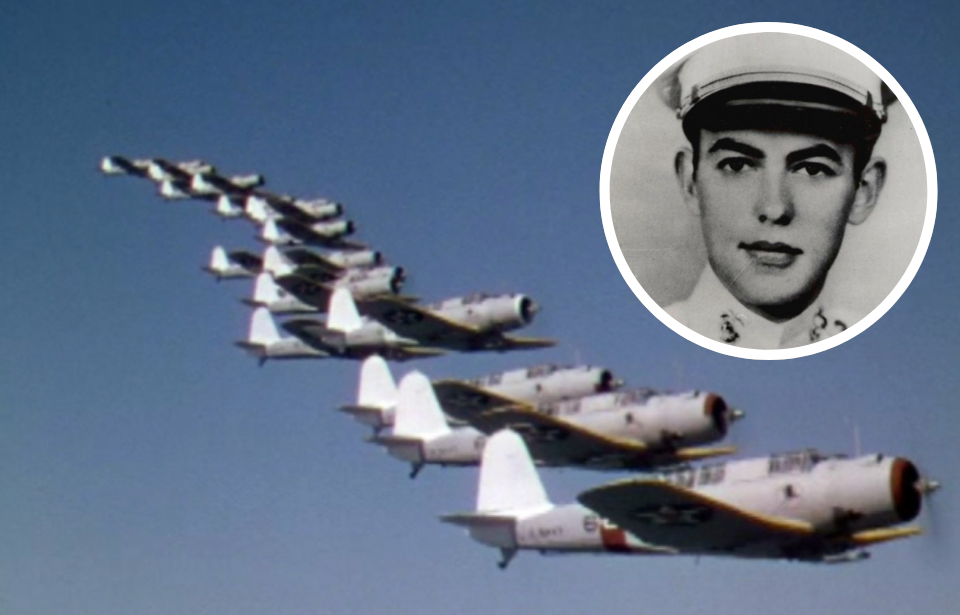The Battle of Midway is regarded as one of the finest and most influential naval victories in history. The battle took place in June 1942 and pitted three U.S. aircraft carriers against four Japanese carriers, all of which had participated in the attack on Pearl Harbor six months earlier. Extreme bravery and heroism were shown by both sides, but despite this, the U.S. only awarded a singular Medal of Honor to a servicemember involved in the battle. This was to Richard E. Fleming.
One of the notable acts of bravery seen in the battle happened when Max Leslie, an officer in charge of Bombing Squadron 3, attacked the Japanese carriers with his squadron despite not carrying a bomb. He and his squadron contributed to the sinking of two Japanese carriers, and for this, Leslie received the Navy Cross.
Richard E. Fleming
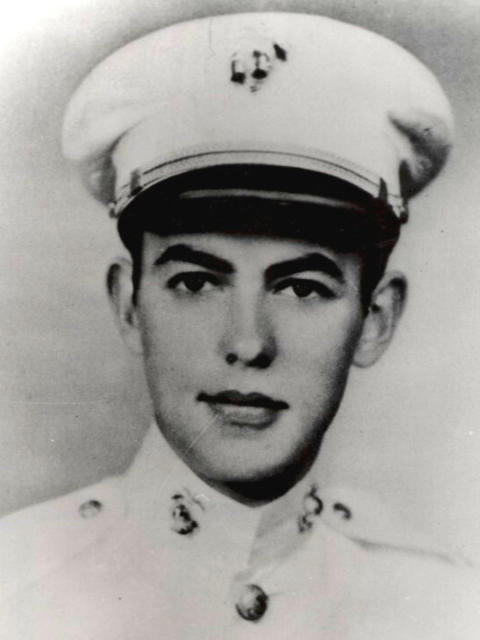
Fleming was born in Saint Paul, Minnesota, on November 2, 1917. After graduating from the Saint Thomas Military Academy in 1935 as a top student, he attended the University of Minnesota, becoming the president of Delta Kappa Epsilon fraternity and graduating in 1939.
Soon after this, he joined the U.S. Marine Corps Reserves and volunteered for flight training. Once again, he completed his training in 1940 at the top of his class. By mid-1942 he had been promoted to captain.
The Battle of Midway
After the successful attack on Pearl Harbor on December 7th, the Japanese aimed to continue this success by knocking out the U.S. carriers that were still a major threat. The carrier threat had been exacerbated in April of 1942 when the U.S. launched the Doolittle Raid from the USS Hornet aircraft carrier. Sixteen B-25 Mitchell bombers were modified to take off from a carrier and have enough fuel to reach the Japanese mainland and strike targets such as Tokyo and other key cities.
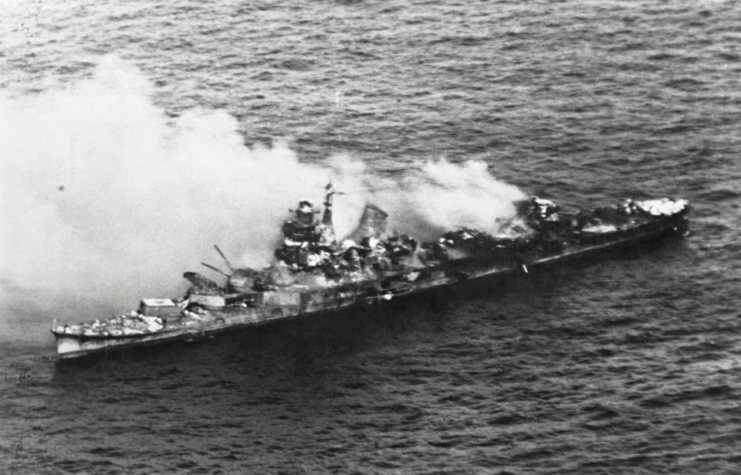
The attacks caused little damage, but were an enormous blow to Japanese morale, who incorrectly believed they were invulnerable to U.S. strikes. Meanwhile, this was a much-needed boost to U.S. morale.
Admiral Isoroku Yamamoto commanded the battle. His goal was to lure the U.S. carriers into battle by attacking Midway Atoll, where he would then decimate their forces and capture the atoll. With the U.S. forces destroyed and the atoll captured, the Japanese would have a significant extension on their area of operations in the Pacific. If these goals were achieved, the Japanese would then begin negotiating the United States’ surrender.
The Japanese planning for the battle was heavily dependant on incorrect intelligence, and to make this worse, U.S. codebreakers had intercepted communications and already knew the attack was coming.
The U.S. and Japanese clashed in battle, which resulted in a crippling Japanese defeat. Four Japanese carriers and 3,000 men were lost to one U.S. carrier and just under 400 men. The U.S. victory is considered to be one of the most impressive and important naval victories in history.
Fleming’s heroic acts during the battle
On June 5, 1942, the second day of the Battle of Midway, Fleming was the Flight Officer of Marine Scout Bombing Squadron 241, taking command after the previous commander had been shot down the day before. The squadron, nicknamed the “Sons of Satan,” flew 16 Douglas SBD-2 Dauntless and 11 Vought SB2U-3 Vindicator dive bombers.
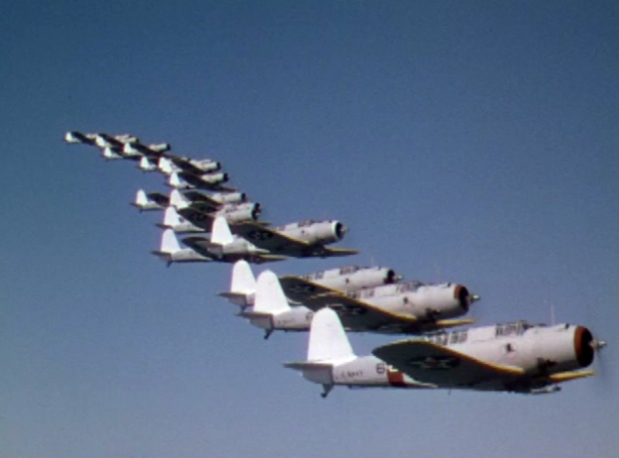
He led his men on an attack against the Japanese heavy cruiser Mikuma. During the attack, he dropped out of formation and dove through a hail of anti-aircraft fire to a height of just 400 feet to guarantee a hit on the vessel. His aircraft was hit and caught ablaze, but he continued on, releasing his ordnance.
Fleming’s aircraft subsequently crashed into the sea, killing him.
For “extraordinary heroism and conspicuous intrepidity above and beyond the call of duty as Flight Officer,” Fleming was posthumously awarded the Medal of Honor, the nation’s highest award.
President Franklin Roosevelt presented the award to Fleming’s mother on November 24, 1942.
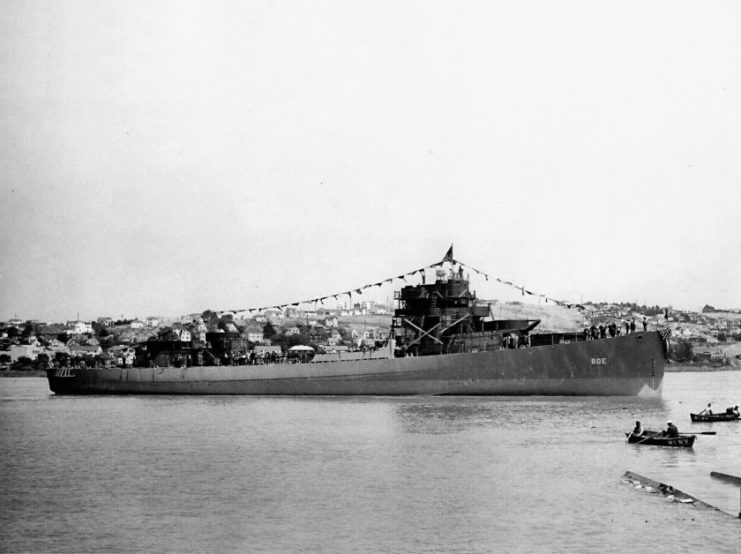
More from us: MoH Recipient Singlehandedly Destroyed A Tiger Tank And Captured 17 Germans
His Medal of Honor citation said: “His dauntless perseverance and unyielding devotion to duty were in keeping with the highest traditions of the United States Naval Service.”
Just over a year after his death, on September 18, 1943, the U.S. Navy commissioned the USS Fleming, an Evarts-class destroyer escort, in his honor.
